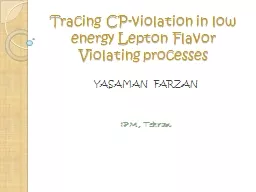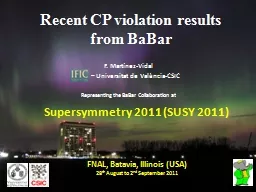PPT-Atomicity Violation Detection
Author : myesha-ticknor | Published Date : 2017-11-10
Prof Moonzoo Kim CS492B Analysis of Concurrent Programs Data Race Free Yet Race Bug 12 Atomicity Violation Detection Prof Moonzoo Kim 2 public class Vector implements
Presentation Embed Code
Download Presentation
Download Presentation The PPT/PDF document "Atomicity Violation Detection" is the property of its rightful owner. Permission is granted to download and print the materials on this website for personal, non-commercial use only, and to display it on your personal computer provided you do not modify the materials and that you retain all copyright notices contained in the materials. By downloading content from our website, you accept the terms of this agreement.
Atomicity Violation Detection: Transcript
Download Rules Of Document
"Atomicity Violation Detection"The content belongs to its owner. You may download and print it for personal use, without modification, and keep all copyright notices. By downloading, you agree to these terms.
Related Documents














